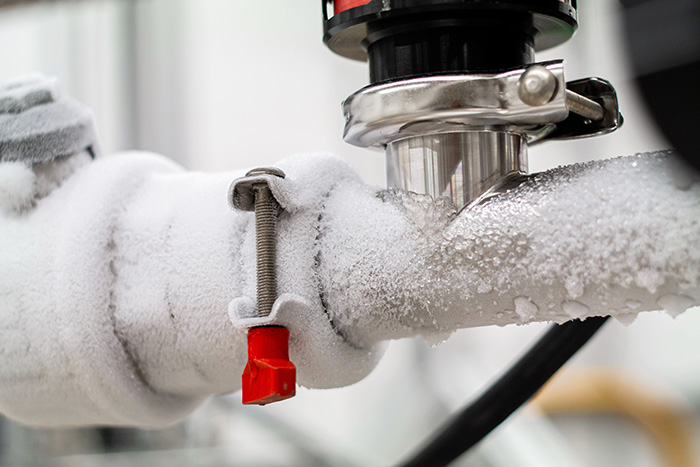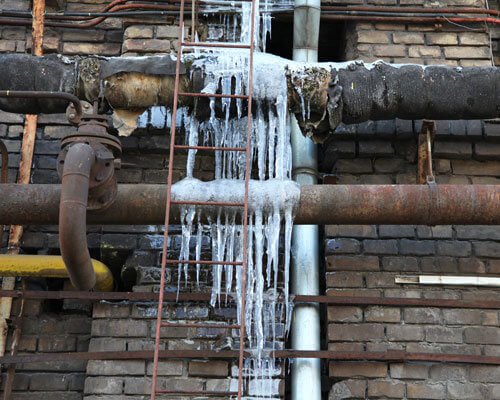Just how do you feel in regards to Prevent Frozen Pipes ?

Cold weather can ruin your pipes, particularly by freezing pipelines. Below's exactly how to avoid it from taking place and what to do if it does.
Intro
As temperatures decline, the risk of frozen pipes boosts, potentially resulting in expensive fixings and water damage. Understanding how to prevent icy pipes is critical for house owners in cold environments.
Understanding Frozen Pipes
What causes pipes to ice up?
Pipelines ice up when revealed to temperature levels below 32 ° F (0 ° C) for extended periods. As water inside the pipes freezes, it broadens, putting pressure on the pipeline walls and potentially triggering them to break.
Threats and damages
Icy pipelines can bring about water system interruptions, residential or commercial property damages, and pricey repairs. Ruptured pipelines can flood homes and cause comprehensive structural damage.
Indications of Frozen Piping
Identifying icy pipes early can avoid them from bursting.
How to recognize frozen pipelines
Try to find decreased water flow from faucets, uncommon smells or sounds from pipes, and noticeable frost on subjected pipes.
Avoidance Tips
Insulating susceptible pipelines
Wrap pipelines in insulation sleeves or utilize warm tape to protect them from freezing temperature levels. Focus on pipes in unheated or outside locations of the home.
Home heating methods
Keep interior areas adequately heated, particularly locations with plumbing. Open closet doors to enable warm air to flow around pipes under sinks.
Shielding Outdoor Plumbing
Garden tubes and exterior faucets
Disconnect and drain yard pipes before wintertime. Install frost-proof faucets or cover exterior taps with protected caps.
What to Do If Your Pipelines Freeze
Immediate activities to take
If you believe frozen pipes, maintain taps open to relieve stress as the ice thaws. Utilize a hairdryer or towels soaked in hot water to thaw pipes slowly.
Long-Term Solutions
Architectural adjustments
Take into consideration rerouting pipes away from exterior walls or unheated areas. Add extra insulation to attics, cellars, and crawl spaces.
Upgrading insulation
Invest in top notch insulation for pipelines, attics, and wall surfaces. Proper insulation assists maintain regular temperature levels and minimizes the threat of icy pipelines.
Verdict
Preventing frozen pipes requires aggressive procedures and quick actions. By comprehending the causes, indicators, and safety nets, house owners can secure their plumbing throughout winter.
5 Ways to Prevent Frozen Pipes
Drain Outdoor Faucets and Disconnect Hoses
First, close the shut-off valve that controls the flow of water in the pipe to your outdoor faucet. Then, head outside to disconnect and drain your hose and open the outdoor faucet to allow the water to completely drain out of the line. Turn off the faucet when done. Finally, head back to the shut-off valve and drain the remaining water inside the pipe into a bucket or container. Additionally, if you have a home irrigation system, you should consider hiring an expert to clear the system of water each year.
Insulate Pipes
One of the best and most cost-effective methods for preventing frozen water pipes is to wrap your pipes with insulation. This is especially important for areas in your home that aren’t exposed to heat, such as an attic. We suggest using foam sleeves, which can typically be found at your local hardware store.
Keep Heat Running at 65
Your pipes are located inside your walls, and the temperature there is much colder than the rest of the house. To prevent your pipes from freezing, The Insurance Information Institute suggests that you keep your home heated to at least 65 degrees, even when traveling. You may want to invest in smart devices that can keep an eye on the temperature in your home while you’re away.
Leave Water Dripping
Moving water — even a small trickle — can prevent ice from forming inside your pipes. When freezing temps are imminent, start a drip of water from all faucets that serve exposed pipes. Leaving a few faucets running will also help relieve pressure inside the pipes and help prevent a rupture if the water inside freezes.
Open Cupboard Doors
Warm your kitchen and bathroom pipes by opening cupboards and vanities. You should also leave your interior doors ajar to help warm air circulate evenly throughout your home.

I was shown that report about How to Prevent Your Pipes From Freezing from an associate on our other web property. Sharing is good. Helping others is fun. I am grateful for your time. Kindly visit our site back soon.
Book Now